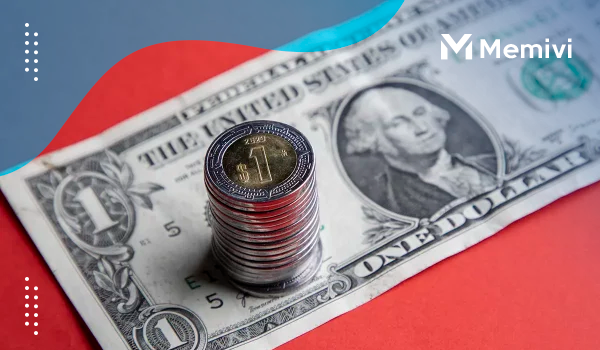
By leveraging the power of a CD ladder, you can enjoy a steady stream of income while taking advantage of different interest rates, making it an excellent choice for conservative investors. In this guide, we will delve into the mechanics of CD ladders, explore their benefits, and outline clear, actionable steps to construct your own. Stay tuned for practical tips that will ensure your CD ladder is optimized for the best returns. Let’s get started!
Understanding CD Ladders: A Brief Overview
A Certificate of Deposit (CD) Ladder is a strategic approach to investing in CDs that helps in staggering maturity dates and enhancing overall liquidity. This method involves dividing your investment across multiple CDs with different maturity terms, ranging from short to long-term durations.
Why Use a CD Ladder?
The benefit of using a CD ladder is to maximize the return on investment while providing regular access to cash. When one CD matures, you either reinvest it into a new CD or use the funds as needed. This approach keeps part of your money locked in for longer terms, often yielding higher interest rates, while still having portions of your investment periodically become available as each CD matures.
Maturity Structure is key to understanding the CD ladder method. By choosing CDs with staggered maturity dates, you ensure a balance between accessibility and higher returns. For example, you might start with CDs that mature in 1, 2, 3, and 5 years. As each one matures, reinvest it into a new 5-year CD, which typically offers a higher interest rate.
This method not only provides a stable means of income but also reduces the risk of interest rate fluctuations. If rates rise, rather than being locked into older, lower-rate CDs, portions of your funds are regularly cycled into higher-rate CDs as they mature.
Benefits of Building a CD Ladder

A CD Ladder can be a powerful tool for maximizing your savings and enhancing financial stability. By structuring your investments into staggered maturity dates, you ensure a steady stream of returns over time. This approach allows access to some funds at regular intervals while keeping the rest of your investment growing. It effectively balances liquidity needs with the desire for higher interest rates available on longer-term CDs.
One major advantage of building a CD Ladder is its potential to improve diversification in your savings plan. By spreading investments across different CDs with varying terms, you mitigate risks associated with having all your money tied to a single maturity date or interest rate. This strategy provides a flexible framework that adapts to changing financial goals or market conditions.
Moreover, constructing a CD Ladder may offer opportunities for higher returns compared to keeping all funds in a single short-term CD. As interest rates fluctuate, strategically repositioning maturing CDs in the ladder can capitalize on periods of rising rates, thus enhancing the overall yield of your portfolio.
Another benefit is the increased financial discipline a CD Ladder can instill. Being a structured savings plan, it encourages consistent investment over time, reducing impulsive financial decisions. It can also serve as a protective barrier, ensuring that a part of your finances remains untouched until its designated maturity, reinforcing long-term saving habits and goals.
Steps to Construct Your CD Ladder
To construct your CD Ladder, start by setting clear financial goals. Decide the total amount you wish to invest and the duration for each CD in your ladder. This approach helps in diversifying your investment and ensuring a steady cash flow.
Step 1: Choose the Right Bank or Credit Union
Research different banks and credit unions to find the best interest rates and terms. Look for institutions with strong reputations and good customer reviews.
Step 2: Allocate Funds Across Different CD Terms
Divide your total investment among various CDs with varying maturity dates. For instance, consider investing in CDs with 3-month, 6-month, 1-year, and 2-year terms. This strategy allows access to funds at regular intervals while maximizing interest earnings over time.
Step 3: Reinvest or Adjust Upon Maturity
When a CD matures, assess your financial situation and decide whether to reinvest the funds into another CD or use the cash as needed. This flexibility is one of the key benefits of a CD ladder.
Regularly monitor interest rates and economic conditions to make informed decisions about your CD ladder. Adjust your strategy as your financial goals evolve.
Tips for Optimizing Your CD Ladder Strategy

Optimizing your CD ladder strategy can lead to enhanced returns and financial security. One effective tip is to diversify your maturity dates. Diversification allows you to benefit from different interest rates and provides more frequent access to funds. Aim to stagger your maturities, for instance, every 6 months to a year, so you always have a CD maturing and can reinvest at current rates.
Another crucial element is rate shopping. Banks and credit unions often offer varied rates, so compare institutions to ensure you’re getting the best possible annual percentage yield (APY). This can significantly boost your earnings over time.
Consider the option of adjusting your ladder based on economic conditions. In an environment where rates are rising, shorter-term CDs might be more advantageous as they provide the opportunity to reinvest at higher rates sooner. Conversely, in a declining rate market, locking into long-term CDs can preserve higher rates before they drop.
Lastly, always align your ladder with your financial goals. Determine whether you want a safety net of funds accessible soon or prefer to focus on long-term growth. Your strategy should reflect how your CDs fit into your overall financial picture, including any other savings, investments, or expenses you might have.


 How to Build Credit in the U.S. from Scratch (Even If You Just Moved Here) <p class='sec-title' style='line-height: normal; font-weight: normal;font-size: 16px !important; text-align: left;margin-top: 8px;margin-bottom: 0px !important;'> Learn how to build credit in the U.S. from scratch with practical steps to establish and maintain a strong financial foundation. </p>
How to Build Credit in the U.S. from Scratch (Even If You Just Moved Here) <p class='sec-title' style='line-height: normal; font-weight: normal;font-size: 16px !important; text-align: left;margin-top: 8px;margin-bottom: 0px !important;'> Learn how to build credit in the U.S. from scratch with practical steps to establish and maintain a strong financial foundation. </p>  Why So Many People Are Broke Even With a Good Salary — and How to Fix It <p class='sec-title' style='line-height: normal; font-weight: normal;font-size: 16px !important; text-align: left;margin-top: 8px;margin-bottom: 0px !important;'> Discover why so many Americans are broke despite high salaries and learn proven steps to build real financial stability and long-term wealth. </p>
Why So Many People Are Broke Even With a Good Salary — and How to Fix It <p class='sec-title' style='line-height: normal; font-weight: normal;font-size: 16px !important; text-align: left;margin-top: 8px;margin-bottom: 0px !important;'> Discover why so many Americans are broke despite high salaries and learn proven steps to build real financial stability and long-term wealth. </p>  How Americans Are Saving Hundreds a Month on Groceries Without Extreme Couponing <p class='sec-title' style='line-height: normal; font-weight: normal;font-size: 16px !important; text-align: left;margin-top: 8px;margin-bottom: 0px !important;'> Discover how Americans are saving hundreds on groceries each month through smart planning, technology, and mindful habits. </p>
How Americans Are Saving Hundreds a Month on Groceries Without Extreme Couponing <p class='sec-title' style='line-height: normal; font-weight: normal;font-size: 16px !important; text-align: left;margin-top: 8px;margin-bottom: 0px !important;'> Discover how Americans are saving hundreds on groceries each month through smart planning, technology, and mindful habits. </p>